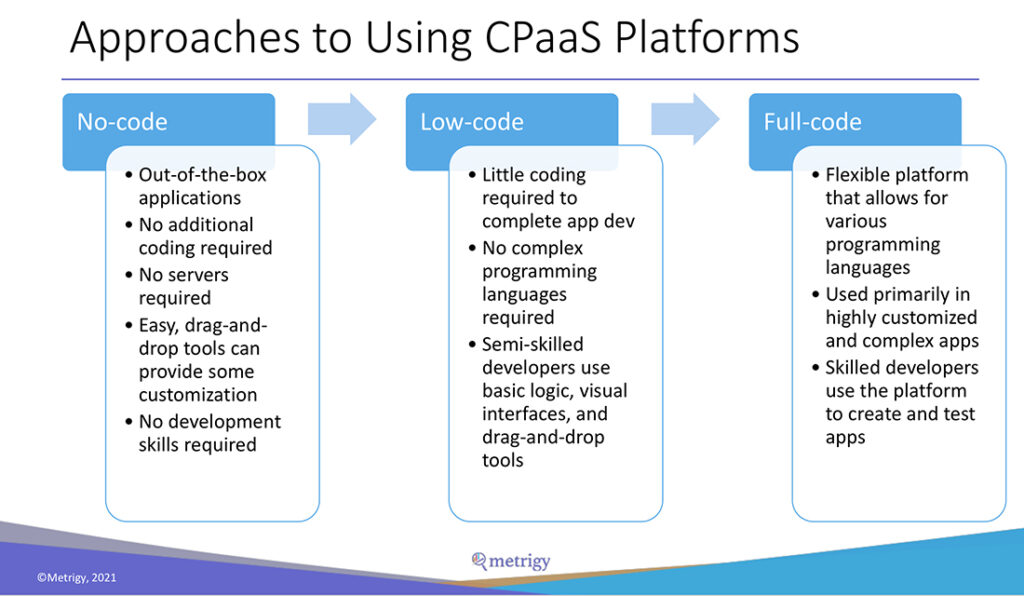As Avaya shifts to a cloud-based, recurring-revenue business model, IAUG members are taking a close look at the potential customer experience (CX) benefits of communications platform as a service (CPaaS). Why? With Avaya One Cloud™ CPaaS organizations can communications-enabled applications to leverage text messages, videos, calls, emails, chatbots, and live chat to deliver in-the-moment, personalized CX experiences.
“Avaya offers tools to its customers that can create custom, yet highly flexible solutions for employees and customers,” said Dave Michels, principal analyst, TalkingPointz. “The scalability and reliability of these tools facilitates the transition from idea to proof of concept to full production with ease.”

Boosting customer experience
At a recent Enterprise Connect seminar, “How You Can Use CPaaS to Boost Customer
Experience,” Robin Gareiss CEO and principal analyst, Metrigy, looked at some of the ways organizations can capitalize on the advantages of these cloud-based solutions.
In her presentation, Gareiss outlined the findings of surveys and interviews with technology and business leaders. Her key message: “CX technology spending leads to success.” Companies that invested more heavily in CPaaS outperformed organizations with below-average spending, according to a global MetriCast study.
“The success group saw significant changes in business metrics,” Gareiss added, citing a minimum 14.4 percent increase in revenue, a 12.6 percent decrease in costs, a 15 percent improvement in customer ratings and a15.9 percent uptick in agent efficiency.
For CPaaS leaders, the typical scenarios driving revenue included:
• Voice/video messages to remind customers about appointments.
• SMS messages with seasonal discounts, reminders to reorder products, outreach for loyalty memberships.
• Click-to-call and webchat to get quick answers or advice on products, and possible recommendations on complementary products.
• Workflows to guide agents on upsell/cross-sell conversations.
• Virtual assistants to help customers on products/services in the self-service channels.
Overall, the value of CPaaS includes affordability, accelerating time to market, better integration with current apps and the ability to customize apps based on an organization’s requirements Gareiss said. Organizations can use APIs and SDKs to develop applications, customize them, or integrate them into existing applications or business processes using internal, third party, or CPaaS provider-employed developers.
In building a business case, Gareiss recommended identifying internal problems or opportunities that CPaaS can address, securing stakeholders and budgets, implementing the new platform and measuring business success.
A growth sector
Gareiss expects average annual CPaaS spending per company to increase to $12 million this year, compared with $9.5 million in 2021. On a global basis, 38 percent of companies surveyed are using CPaaS now and another 30.6 percent are planning to use it this year. Another 21 percent were evaluating CPaaS or planning to implement in 2023.
As IAUG members know, Avaya is playing a leading role in that technology trend. In its recent second-quarter financial report, the company noted that overall OneCloud annual recurring revenue (ARR) reached $750 million, up 118 percent from the prior year. “We drove record growth for Avaya OneCloud ARR,” said Jim Chirico, president and CEO. “We are successfully repositioning the company from our historic one-time revenue model to a recurring one. In fact, 75 percent of our new bookings were Avaya OneCloud. Our strategy is clearly taking hold faster than we anticipated, leading to a significant and fundamental shift in our business.”
